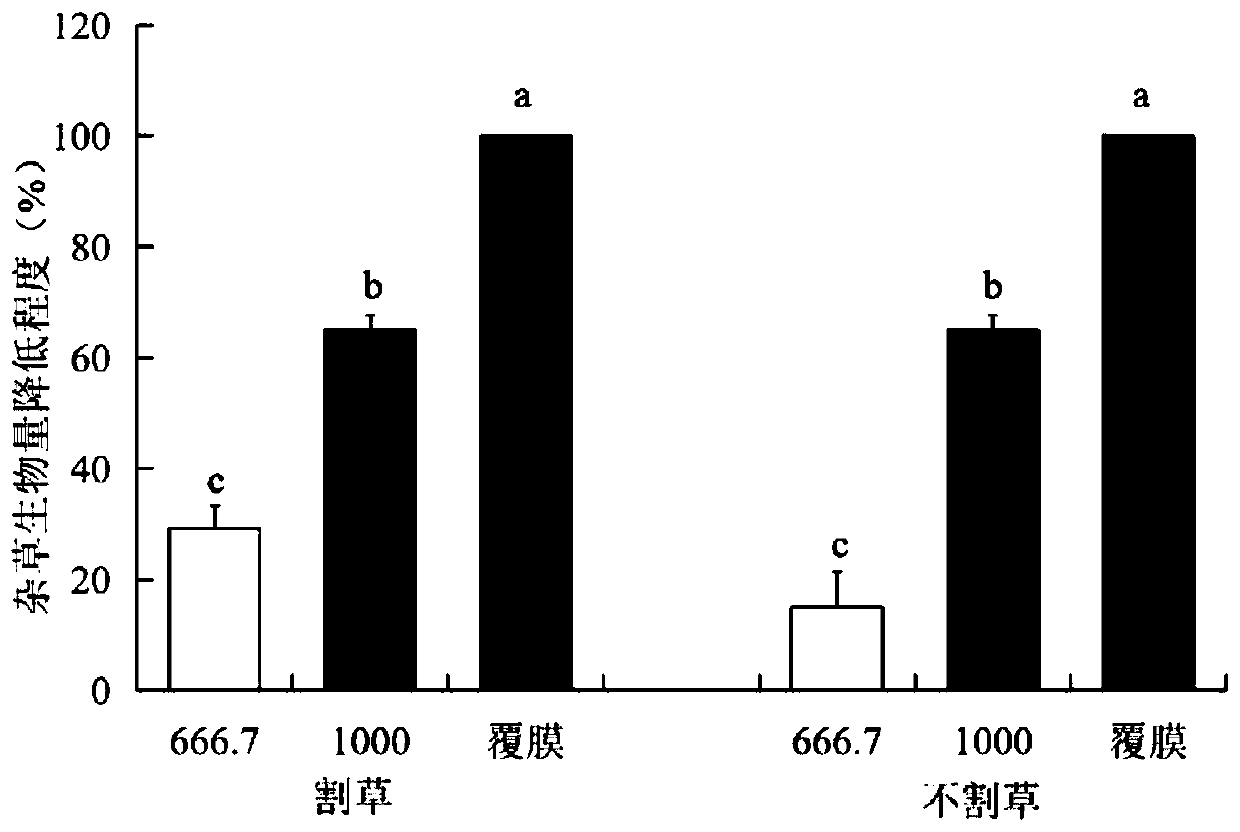Control method for invasive plant bidens pilosa L. and application
A technology of ghost needle grass and control methods, applied in botany equipment and methods, applications, plant protection, etc., to achieve long-lasting control effects, reduced seed bank density, and good control effects
- Summary
- Abstract
- Description
- Claims
- Application Information
AI Technical Summary
Problems solved by technology
Method used
Image
Examples
Embodiment 1
[0051] The experiment was divided into four experimental groups:
[0052] Experiment 1: Mowing the grass in advance and covering it with rice straw only;
[0053] Experiment 2: Mowing the grass in advance and covering it continuously with rice straw-film;
[0054] Experiment 3: Do not mow the grass in advance, and only cover it with rice straw;
[0055] Experiment 4: Do not mow the grass in advance, and use rice straw-film to cover continuously;
[0056] details as follows:
[0057] 1. Experiment 1:
[0058] Effects of rice straw mulching on weed biomass and coverage when mowing in advance:
[0059] The experiment was carried out at the Zengcheng Teaching and Research Base of South China Agricultural University. The experimental site is a flat wasteland where weeds have grown naturally for many years. Among them, the dominant weeds are ghost needles (coverage 80%) and crabgrass (coverage 10%). .
[0060] In the experiment, rice stalks of late season rice were used as cov...
Embodiment 2
[0094] Changes in weed seed germination and soil seed bank during mulching:
[0095] The experiment was carried out at the Zengcheng Teaching and Research Base of South China Agricultural University. The experimental site is a flat wasteland where weeds have grown naturally for many years. Among them, the dominant weeds are ghost needles (coverage 80%) and crabgrass (coverage 10%). .
[0096] In the experiment, rice stalks of late-season rice and black polyethylene plastic film were used as covering materials, and rice stalks of late-season rice were used as a control.
[0097] When the late season rice stalks are harvested, 5-10 cm of stubble is left, and the grains on the ears are removed, and the length of the rice stalks is 30-70 cm. Harvest the straw and dry it to a water content of 4% to 7%. Cover it evenly on the grass in winter (January 12). Lay after stepping down. Three groups of experiments were set up, and the amount of rice straw laid in each group was 0kg, 666.7...
PUM
 Login to View More
Login to View More Abstract
Description
Claims
Application Information
 Login to View More
Login to View More - R&D
- Intellectual Property
- Life Sciences
- Materials
- Tech Scout
- Unparalleled Data Quality
- Higher Quality Content
- 60% Fewer Hallucinations
Browse by: Latest US Patents, China's latest patents, Technical Efficacy Thesaurus, Application Domain, Technology Topic, Popular Technical Reports.
© 2025 PatSnap. All rights reserved.Legal|Privacy policy|Modern Slavery Act Transparency Statement|Sitemap|About US| Contact US: help@patsnap.com



